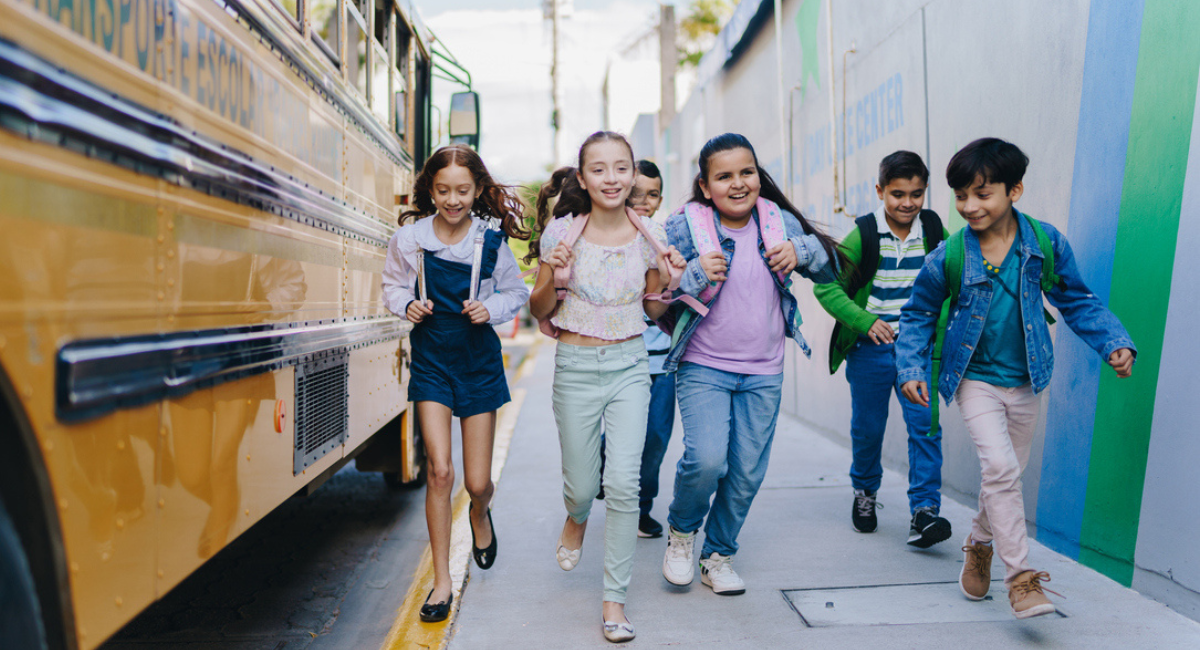“We set the tone for the year by beginning to build the routines and habits that shape our classrooms. What we do in this first lesson reverberates in all of those that follow,” writes Andrew Atherton. As back-to-school season begins, educators and administrators know how powerful those early days are. However, putting that knowledge into action requires planning and focus.
Whether you’re leading a charter school, district school, or an innovative program, the first few weeks offer a unique opportunity to build trust, belonging, and momentum for the rest of the school year. Here’s a practical, community-centered welcome plan you can put in place right now to make those first weeks count.
Why the First Weeks of School Matter
Every interaction has the potential to impact an educational setting, but the first few weeks of school hold unique power. As the CDC reports, “Schools can play a critical role in promoting students’ health and development by creating environments where all students feel that they are cared for, supported, and belong.”
What happens in the school environment has ripple effects on a wide range of student outcomes. Students who feel connected are more likely to have stronger academic performance, better health behaviors, and fewer incidents of violence or substance use.
Fostering a sense of belonging from the very beginning of the school year is a crucial tool toward this goal. This sense of connectedness is not just for new students. Returning students and staff also benefit from an intentional re-entry strategy. Reinforcing culture and community norms provides a shared sense of momentum.
Think beyond a one-day orientation. Instead, build in many threads in a multi-week “welcome phase.” As a result, you’ll make the transition into the new school year easier and more useful for participants.
The Four Pillars of a Strong Start
These four pillars offer an excellent framework for a strong back-to-school season.
Relationships First
When people feel seen and supported, they engage. You can do this in small ways, like personally welcoming students by name at the door. This is also a great time to use intentional icebreakers. Education expert Jennifer Gonzalez suggests options like “Blobs and Lines,” an activity that gets students moving and discovering common ground.
Relationships also extend beyond the classroom. Giving families time to meet with teachers and support staff allows them to get to know each other in a low-stakes environment. When academic or behavioral issues arise later, they will already have an established bond to build from in more difficult check-ins.
The back-to-school period is also a great time for teachers to collect short surveys about student interests, strengths, and concerns. Tracking a few “sticky facts” about each student in the advisory notes section of your SIS can help personalize check-ins and tasks from early in the school year.
Routines and Predictability
Habits form quickly, so make sure the right ones take root. Use the first weeks to set clear daily rituals and communication norms.
A consistent opening ritual (like a morning greeting or daily check-in question) helps students transition into learning mode each day while feeling supported and noticed. Over time, these habits can build into more content-rich routines that help students move from task to task throughout the day with purpose and clarity.
While these kinds of routines are especially important for supporting students with trauma and neurodivergence, they also offer predictability and safety, reduce stress, and facilitate learning for all students.
Cultural Integration
Every student and family should feel like they belong. That begins with sharing your school’s mission, values, and traditions in visible, engaging ways.
Student-led meetings can give students agency and “cultivate a sense of responsibility” in shaping and upholding school values. Another way to promote school values is to provide visible and meaningful celebrations of achievement. This might include ceremonies, awards, or medallions tied to academic or character goals. Introducing students to these upcoming celebrations early in the school year will give them a path to participation and achievement.
Be sure to use the early weeks of school to introduce students to organizations, activities, and clubs. These invitations offer ways for students with diverse interests and needs to gain extracurricular connections that extend beyond the school day.
As a high school coach puts it: “Students who participate in after-school activities generally have better behavior, grades, attendance, and test scores. They are more likely to graduate on time and less likely to drop out. They are better at working in teams, solving problems, and developing persistence and grit, which ultimately helps them become better prepared citizens in our communities.“
Equitable Access to Information and Resources
Inclusive school culture only works if everyone in the community gets the message. It is crucial to ensure that your welcome materials, informational handouts, and school resources are equitably accessible by all members of your community.
High school educator Paola De Avila found success in creating welcome packets geared toward English language learners and their families. Translated materials that include a glossary of academic terms and acronyms help serve as a “single point of reference” for important information about enrollment and school requirements.
Your welcome events should also consider the needs of neurodivergent community members and those with disabilities. Communicating information in different formats ensures everyone receives the information they need when and how they need it.
A strong long-term strategy also includes making applications, family portals, and lotteries transparent and approachable, especially for applicants and new students. Your welcome week materials should be an extension of a broader accessibility strategy.
Designing Your Back-to-School Welcome Plan
As you shape your school’s welcome plan, consider starting the year with a mix of light academic activities and community-building events to ease students into the school year.
Make sure you identify key “trust touchpoints” that allow meaningful connections with families. These might include:
- Staff meet-and-greets
- Student project showcases
- Family phone check-ins
- Community welcome nights
Ideally, your strategy uses a mix of approaches to reach families with a variety of needs and schedules.
Your staff play a central role in setting the tone for the school year and building real connections with students and families. Professional development focused on relational teaching methods, cultural competence, and early warning systems empowers teachers with the tools they need to navigate the school year successfully.
With these goals in mind, make sure staff are supported in using your school’s edtech systems. With regular training, they can make the most of tools that help streamline communication, send reminders, and connect with families in multiple languages. These platforms can also help staff keep track of key learning markers like attendance, grades, and student engagement, all in one place.
Additionally, don’t overlook students who miss the first days. It’s especially important that your welcome phase includes a plan to reach out to absent students. Leveraging early absentee data can allow effective intervention before patterns of absenteeism set in.
A Successful Welcome Phase Ensures Long-Term Benefits
A successful back-to-school phase sets the tone for the rest of the year. When students feel welcomed and supported, they’re more likely to stay engaged and on track. And when staff are equipped with tools and training, they’re more effective at identifying and responding to early signs of struggle.
Take the time to build a thoughtful, inclusive welcome plan. With the right systems and structures in place, like School Pathways’ SIS suite, you can create data-driven practices that support every student and strengthen your whole school community from day one.




